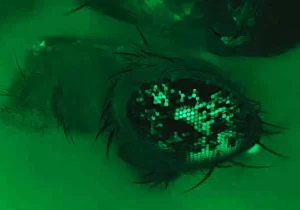The study found that CRISPR-Nickase, which changes only one allele of a given gene, improves the efficiency of gene editing compared to CRISPR-Cas9.

CRISPR-Cas9 has revolutionized biology and healthcare. It hijacks the bacterial immune defense system to precisely edit the genome. But the method is not perfect. It can insert unwanted DNA sequences, completely delete segments, and accidentally mutate non-target genes.
Research published in Science Advances today (July 1) reports that an alternative “soft CRISPR” called CRISPR-Nickase can edit DNA efficiently and safely.
Cas9, the molecular scissors that remove target genes, has two active sites that separate each copy. Nickase is a mutant of Cas9 with one site deactivated, so it only captures one.
Single sections are useful when only one version of a gene is defective, which is common in many genetic disorders. CRISPR-Nickase can remove the faulty copy, and the cell’s own DNA repair machinery can then copy the normal version in its place. This differs from traditional CRISPR-Cas9, where an experimentally introduced DNA template is required to repair double-strand break damage—a process that can be error-prone, says study co-author Ethan Bier, a developmental biologist at the University of California, Berkeley. , San Diego.
However, nick correction is common in cells. Each time a gene is copied or expressed, the cell cuts the DNA to unfold it and repairs it to condense again. “This happens thousands and thousands of times a day,” says Bier, who founded two companies based on CRISPR gene editing: Synbal Inc., which produces research animals, and Agragene, which develops applications for pest control.
Because cells naturally repair nicks, the researchers hypothesized that CRISPR-Nickase could be an efficient way to edit individual copies of a gene. In research published by other scientists, Nickase showed promise in the sperm and eggs of fruit flies, which carry only one copy of each gene. This study shows that it can also function in somatic cells that carry two.
The gene they targeted codes for red eyes when functional, but the lab-raised mutant flies they engineered had two defective copies that coded for white eye color instead.
These copies differed in where the mutation occurred. The mother’s copy was functional at site one but mutated at site two, while the father’s copy was functional at site two and mutated at site one. The researchers engineered CRISPR-Nickase to disrupt the DNA at the mutated paternal site 1 and replace it with a functional copy of that site from the maternal gene. The corrected paternal copy would then encode the production of red eyes and restore normal eye color.
The researchers tested the modified approach against traditional CRISPR-Cas9 and found that Nickase leapfrogged Cas9.
Study co-author Annabel Guichard, a CRISPR researcher at the University of California, San Diego, says she was amazed when she first looked into the piercing red eyes of the engineered flies.
Nobody expected it to work so remarkably.
In addition to being efficient, CRISPR-Nickase also carried less risk of mutation compared to CRISPR-Cas9. Cas9 caused unintended edit-site mutations 66 percent of the time. Nickase’s mutation was only 0.7 percent—a hundredfold decrease.
This does not include off-target mutations in non-targeted genes.
These off-target mutations are particularly dangerous because they could accidentally break healthy genes and risk the development of diseases such as cancer. Nick doesn’t do anything.
See “New Technical Limits to CRISPR-Cas9 Off-Target Mutations”
For an application down the road where you’d want to use it for gene therapy, that’s exactly what you want. No off-targets and no on-target mutations.”
The minimal mutation rate is particularly exciting to Vivian Vigliotti, who researches health services and public health needs at the Yale New Haven Health System and was not involved in the study. “I think it’s great,” says Vigliotti, who has published on the medical applications of CRISPR. “That’s really what we’re after.
Ben Ewen-Campen, a developmental biologist who studies CRISPR at Harvard Medical School, says the arrival of CRISPR-Cas9 was “like a Cambrian explosion of new techniques,” facilitating new discoveries and spawning potential applications. The efficiency with which CRISPR-Nickase works was the latest “surprising finding” to emerge from the rapid development of CRISPR-Cas9, he says.
See “Genome editing adaptation of CRISPR earns Nobel prize in chemistry”
Because CRISPR-Nickase works in adult cells, the study’s authors say it could one day be useful in treating genetic diseases — especially ones like Huntington’s disease or some cancers where one bad copy can cause the disease. If the second copy is functional, CRISPR-Nickase could replace the diseased version with a healthy one.
The technique needs to be validated in mammals before it can be tested in humans and possibly reach the clinic. Bier says it will almost certainly turn out to work better in flies than in mammals, because fly chromosomes align so that the template DNA is near the repair site, but mammalian cells are not organized that way.
But if scientists can optimize the technique in mammals, the applications could be far-reaching. Molecular cargo with CRISPR-Nickase technology could potentially be delivered to hard-to-reach areas of the body such as the liver and retina.“But I think you want to get into the parts of the body that are difficult to fix any other way.